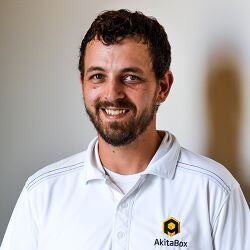Succession
Strategies to attract younger FM professionals

Smart succession planning makes a facility management team more attractive to younger workers – an important advantage in a time when finding qualified employees is tougher than ever.
On one end of the current labor picture is retiring baby boomers. According to the Global Retirement Index, the percentage of the population currently over age 65 is growing quickly in almost every country. Considering the average FM is 50 years old, more than half of today’s professionals will retire in the next five to 15 years.
On the other end, fewer younger workers are poised to replace those retirees. An international survey by Manpower Group shows skilled worker shortages are at their highest levels since 2006.
Historically, many facilities workers have come from the construction industry. But huge labor shortages in construction mean fewer people coming from that pipeline. The U.S., Canada, the European Union, India and Japan are all wrestling with unprecedented numbers of construction job vacancies.
If FMs wish to hire and retain younger workers in a labor pool this tight, they need to create an environment that attracts millennial and Generation Z workers. But how? This is where succession planning comes in.
Succession planning is so much more than simply capturing institutional information from retiring workers. It is about moving forward from the past and transitioning into the type of workplace that meets the needs of younger generations.
3 benefits of building a welcoming environment for younger workers
The competition for new workers is intense. Creating the type of environment where younger workers actually want to be brings important, long-term benefits.
First, it helps an FM team stand out in the sea of organizations clamoring for new employees. If a younger worker has the choice between a progressive, tech-savvy team or a more traditional, less advanced team, chances are they will go with the first team.
Building a reputation as a welcoming place for millennials and Gen Z gives an organization a distinct edge over teams perceived as old fashioned. That positive reputation can result in good quality candidates seeking out the organization versus the organization having to heavily invest in recruiting.
Second, it supports better retention in a world of shorter tenures and more turnover. The days of FM employees remaining with one company for their entire career are ending. On average, across all industries, Millennials stay at a job for only 2 years and 9 months while those in Gen Z stick around just 2 years and 3 months.
But it is possible to buck the trend and retain younger workers for the long term if an organization focuses on delivering what they desire in a workplace. Having a retention mindset also saves money, since it costs significantly more to replace a worker than keep an existing one.
Teams that provide what younger workers prefer can reap the benefits of less turnover and longer tenures, including:
- Better productivity
- Higher team morale
- More consistent performance
- Reduced hiring and training costs
- More skilled, experienced employees
Third, it increases referrals of potential new employees. If younger workers are satisfied in their roles, they are more likely to recommend their employer to colleagues and friends looking for work. According to LinkedIn, the number-one way people discover a new job is through referrals.
Job candidates who are referred by existing employees are highly sought after, because they tend to be more reliable, a better fit for the role and department, and are more likely to remain in the role longer.
Becoming a better workplace for millennials and Gen Z
Shifting from an environment where everyone remains with the organization for 40 years, has all the necessary institutional knowledge in their heads, and works just fine with a pen and clipboard to one in which people only stay a few years, need training and professional development, and prefer tablets and laptops will not happen overnight. It will take a change in mindset, dedication and time to get there.
This is why planning out this transformation is so important. An effective succession plan is the map to the ultimate goal: an FM team that attracts and retains the younger talent necessary to support the future of the organization.
What should a succession plan for today’s FM departments look like? What should it include? Four of the most important issues to address in a succession plan are:
Technology & data management
FM teams will not get very far in their efforts to bring in younger workers if they cling to old-fashioned tools and processes. As avid technology users, millennials and Gen Z are drawn to job opportunities and organizations that are not afraid to embrace new tech.
A Dell Technologies survey found that 80 percent of Gen Z aspire to work with cutting-edge technology. Additionally, 91 percent of Gen Z say that a company’s approach to technology is a factor when choosing among similar job offers.
Not only does appropriate technology use make an FM team more desirable to younger workers, it also positions the team to take advantage of the increasingly intelligent tools of the future. It only makes sense to incorporate technology use into a succession plan.
A succession plan should set milestones that transition the team toward more modern tools and processes. Such goals could include:
- Getting important information and actions off paper
- Moving away from clunky, outdated programs
- Breaking down data silos
- Adopting mobile technology
- Providing adequate training on all available tools
- Bringing all facilities data into one easy-to-access place
- Establishing processes for keeping facilities data current
Knowledge transfer
Preserving and passing on institutional knowledge is a key component of any succession plan. When older, more experienced employees leave, they take their hard-earned wisdom with them. Those who remain often struggle to regain that knowledge.
A recent survey found that 84 percent of U.S. employees say it is a big loss when older employees retire without passing on their knowledge. And nearly half of U.S. employees (47 percent) are left learning how to do the job on their own because knowledge transfer did not occur.
In addition, research reveals that 42 percent of the skills and expertise required to adequately perform in a given position are known only by the person currently in that position. When that person leaves, their successor ends up having to learn 42 percent of their role from scratch.
All of that can be avoided with effective knowledge transfer.
The secret to successful knowledge transfer is a well-structured and easy-to-use data repository: a place where veteran employees can input their know-how and newer employees can study it.
A comprehensive FM software system can serve as such a repository by bringing all a facility’s data into one easily accessible place. To be effective as a knowledge transfer tool, FM software should include:
- Digital floor plans that include the location of every asset
- Current asset data – including current condition, photos and notes
- Asset relationships
- Maintenance history
- Work order management
- Inspection schedules and reporting
- Data from the latest facility condition assessment
- Capital management information
It also needs to be simple enough for older employees to understand while offering a streamlined user interface (UI) for tech-savvy younger employees.
Diversity, equity and inclusion (DEI)
DEI is extremely important to workers of younger generations. A SurveyMonkey study discovered that 69 percent of millennials would stay at a diverse company longer than five years compared to a non-diverse company. And 77 percent of Gen Z say a company’s level of diversity impacts their decision to work there.
However, becoming a more diverse organization does not just happen on its own. FM teams need to take a strong, intentional stance on DEI. Including DEI strategies in a succession plan can help jumpstart (and maintain) the journey toward greater diversity.
- Establish Employee Resource Groups (ERGs) - ERGs are employee-led groups focused on race, gender, religion or another defining characteristic group members share. They help foster inclusivity and build community, support learning and development, and offer leadership opportunities.
- Review and improve company policies and practices with DEI in mind - Assess policies, procedures and systems for barriers to equity, fairness and accessibility. Does the organization have systems in place that thwart DEI? Do behaviors or cultural norms exist that disengage diverse employees?
- Provide bias and diversity training for recruiters and leadership
- Create a mentorship program for new employees - Pair mentors and mentees of different backgrounds together to break down preconceived perceptions and promote education, tolerance and inclusion.
- Hire more diverse employees (including women, people of color, people with disabilities, etc.)
- Create a position or a team that focuses on diversity - Make them responsible for creating, recognizing and implementing actions to promote and encourage diversity within the organization.
Advancement opportunities for all
Dead-end jobs are a hard sell to millennials and Gen Z. If there are no professional development options or possible promotions in an FM department, what is the point of working there?
Among working millennials, 91 percent view career progression as a top priority, and 53 percent have been disappointed by a lack of personal development training when starting a new job. Meanwhile, within Gen Z, 76 percent view learning as key to their advancement, and 83 percent want to learn skills to perform better in their current role.
An FM department succession plan should include strategies for providing a robust learning environment for younger workers, including:
- On-the-job training
- Membership in industry organizations
- Conference and tradeshow attendance
- Opportunities to earn certifications and other credentials
In addition, succession planning should address creating career paths into leadership roles. Giving younger workers various options for advancing their careers within an FM department increases retention and encourages them to continue learning and growing as professionals.
It also helps facilitate the advancement of more diverse people into positions of authority – something the FM industry could definitely improve on. While diversity is growing in the lower ranks, most FM leaders tend to still be older, male and white.
For example, women constitute almost one-third of the entry-level facilities workforce. However, they make up only 20 percent of mid-level and 15 percent of senior-level facility management jobs.
Having diverse leaders not only attracts more diverse new employees, it also boosts the success of the organization as a whole. Research from McKinsey found that gender diversity on executive teams strongly correlates to greater profitability and value creation.
Career advancement strategies for an FM department’s succession plan could include:
- Creating individual succession plans for every key position in the department that outlines the necessary skills and knowledge needed for each role
- Allowing job shadowing and providing job coaching
- Establishing fair, consistently administered promotion policies and procedures
- Mapping out different career paths for workers to see
- Providing non-traditional career paths, such as job redesign, job rotation, non-management advancements or horizontal career paths
The world is changing and FM must change with it
Twenty or 30 years ago, a typical facilities employee spent their entire career with the same organization. They knew everything there was to know about the building and could keep it running smoothly with only a few people (or even single-handedly). Buildings were less complex, turnover and staffing were rarely a concern, and an occupant could simply ask the FM to fix something and they would fix it.
Today is a totally different story. Buildings are bigger and more complicated. Staffing is a revolving door of existing employees leaving for greener pastures and new employees coming in to replace them. Rarely does one person know every detail about the building.
Yet many organizations are so used to the “good old days” that they are not planning for the changes that come with a new generation of workers. It is time to take a good, hard look at the realities of FM in the 21st century and adjust course accordingly.

Josh Lowe has a degree in architecture, a background in construction and a penchant for pushing the boundaries of new technologies, as he leads the way in the building industry. He is passionate about helping AEC firms, building owners and FM professionals make data-driven decisions for operational efficiency and success. He literally helped write the book on building information modeling (BIM) as a contributing author to “Mastering AutoDesk Revit Architecture: 2011 & 2012,” and has consulted on several BIM and facility management technologies. In 2016, he co-founded AkitaBox, a SaaS application for proactive building management and facility assessments.
References
im.natixis.com/us/resources/2022-global-retirement-index-report-full
go.manpowergroup.com/talent-shortage
4castplus.com/global-labor-shortage-in-construction-challenges-and-solutions/
careerbuilder.com/advice/blog/how-long-should-you-stay-in-a-job
dell.com/en-us/dt/corporate/newsroom/generation-z.htm
hrdailyadvisor.blr.com/2018/07/18/knowledge-loss-turnover-means-losing-employees/
Read more on Leadership & Strategy , Career Advancement and Emerging Topics
Explore All FMJ Topics









